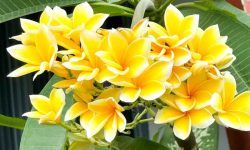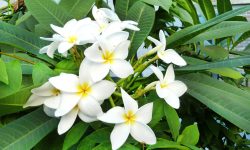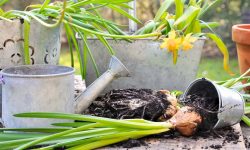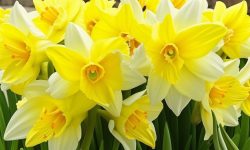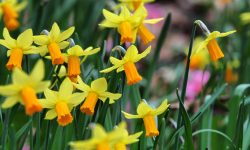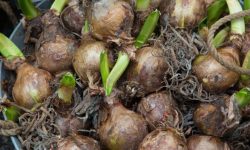Clematis plants are treasured by gardeners worldwide for their spectacular and varied blooms that can transform any garden space into a vibrant tapestry of color. Understanding when clematis bloom is essential to planning your garden so you can enjoy these beautiful flowers throughout the growing season. This comprehensive guide explores the flowering seasons of clematis, factors that influence their bloom times, and practical tips to maximize your garden’s floral display.
Knowing the specific bloom periods of different clematis varieties can help gardeners synchronize planting, pruning, and care to ensure continuous flowering and healthy growth. Whether you prefer early spring blossoms or summer’s long-lasting blooms, clematis offers options for every garden style and climate.
Understanding Clematis Blooming Cycles
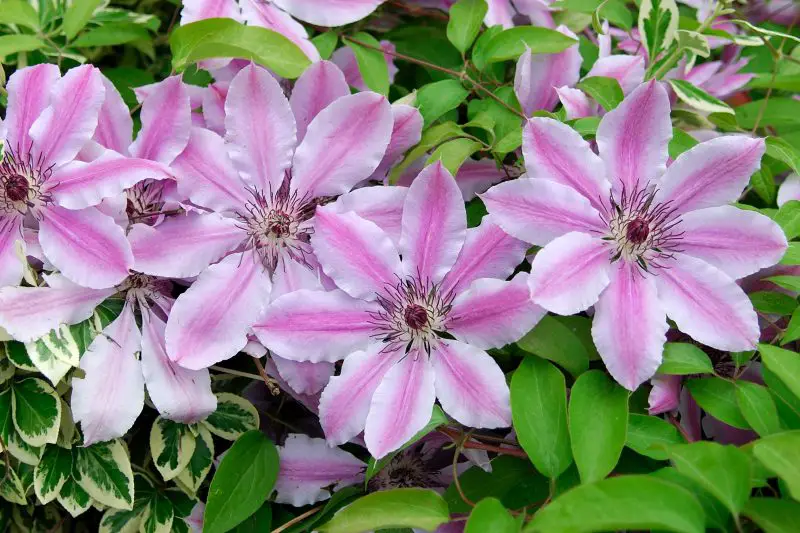
Clematis bloom times vary greatly depending on the species or hybrid type. Generally, clematis fall into three main groups based on when and how they flower. This classification is crucial because it determines the optimal pruning time and influences your expectations for when you will see flowers.
Group 1 clematis are early bloomers that flower in late spring on old wood, meaning their blooms develop on growth from the previous year. Group 2 clematis bloom twice, first in late spring on old wood and again in summer on new growth. Group 3 clematis flower exclusively on new growth and typically bloom from midsummer to early fall. Understanding these groups helps you care for your plants properly and plan for a succession of blooms.
Group 1 Clematis: Early Bloomers on Old Wood
Group 1 clematis varieties bloom earliest, often starting as early as April or May, depending on your climate. They produce flowers on the previous year’s stems, which means pruning must be done carefully to avoid cutting off flower buds.
Common examples of Group 1 clematis include Clematis montana and Clematis alpina. These species offer abundant, often fragrant flowers and are some of the first clematis to brighten spring gardens. Since their blooms develop on old wood, pruning is generally limited to removing dead or weak stems immediately after flowering to encourage healthy new growth.
Gardeners appreciate Group 1 clematis for their reliability and spectacular spring show. Their early bloom time also makes them excellent companions for bulbs and other spring-flowering plants.
Group 2 Clematis: Repeat Bloomers on Old and New Wood
Group 2 clematis have a longer flowering period with two distinct blooms each year. The first flowering occurs in late spring on old wood, while a second, often lighter, bloom happens in mid to late summer on new growth.
Popular Group 2 clematis include Clematis ‘Nelly Moser’ and Clematis ‘Josephine’. These hybrids are prized for their large, colorful flowers and their ability to provide a continuous display with proper pruning.
When pruning Group 2 clematis, gardeners should remove dead or weak stems in early spring and lightly trim the plant after the first bloom to encourage the second flowering. This dual blooming cycle allows for extended enjoyment throughout the growing season, making Group 2 clematis highly versatile and popular in many gardens.
Group 3 Clematis: Late Bloomers on New Wood
Group 3 clematis bloom exclusively on new growth, meaning their flowers appear later in the season, typically from mid-summer through early fall. These varieties are often the last clematis to flower, providing color and interest when many other plants begin to fade.
Examples of Group 3 clematis include Clematis ‘Jackmanii’ and Clematis ‘Henryi’. These vigorous growers produce large, bold flowers that can last well into autumn.
Pruning Group 3 clematis requires cutting back all stems to about 12 inches above the ground in late winter or early spring. This hard pruning encourages robust new growth that will support flowers throughout the summer and fall. Group 3 clematis are ideal for gardeners looking to extend their flowering season and enjoy vibrant blooms late into the year.
Why Blooming Cycles Matter for Gardeners
Understanding these blooming cycles is critical for maximizing your clematis’s floral potential. Incorrect pruning can inadvertently remove flower buds, reducing or eliminating blooms for the season. Knowing which group your clematis belongs to allows you to prune at the right time and maintain healthy growth.
Moreover, by combining clematis from different groups, gardeners can create layered bloom times that extend color and interest in the garden from early spring through fall. This knowledge empowers gardeners to plan thoughtfully, ensuring continuous visual appeal and healthy plants season after season.
Pruning Techniques for Each Clematis Group
Group 1: Prune Right After Bloom on Old Wood
Group 1 clematis bloom early in spring on stems that grew the previous year, also known as old wood. Because flower buds form the year before, heavy pruning in late winter or early spring can remove these buds and prevent blooming.
The best time to prune Group 1 is immediately after they finish flowering, usually late spring to early summer. At this point, prune sparingly—remove dead, damaged, or weak stems to keep the plant healthy. Light thinning can also help improve air circulation and encourage new growth. Avoid cutting back hard; instead, maintain the natural shape to preserve next season’s flowers.
Popular Group 1 varieties like Clematis montana benefit from this gentle post-bloom pruning.
Group 2 Clematis: Two-Stage Pruning on Old and New Wood
Group 2 clematis bloom twice—once in late spring or early summer on old wood, and then again on new growth in midsummer or later. This dual blooming means pruning requires more attention and timing.
In late winter or early spring, perform light pruning by removing dead or weak stems and trimming back about one-third of last year’s growth. This encourages healthy early blooms.
After the first flowering, usually by mid to late summer, deadhead spent flowers and lightly trim the plant to stimulate new shoots. This second pruning promotes the development of flower buds on new growth for a repeat bloom.
This group includes many popular hybrids such as Clematis ‘Nelly Moser’ and ‘Josephine’, prized for their extended flowering season.
Group 3 Clematis: Hard Pruning on New Wood
Group 3 clematis bloom solely on new wood, meaning all flowers develop on the current year’s growth. This allows for much more drastic pruning without risking flower loss.
Cut all stems back hard in late winter or early spring, leaving about 12 to 18 inches (30 to 45 cm) of stem above the ground. This encourages strong new shoots to grow in spring and results in a profusion of large blooms in summer and early fall.
Varieties like Clematis ‘Jackmanii’ thrive with this hard pruning and provide spectacular late-season color.
General Pruning Tips for All Clematis Groups
Always use sharp, clean pruning shears to make clean cuts that heal quickly. Make cuts just above a healthy bud or side shoot to encourage new growth.
Regularly removing dead or damaged wood and thinning dense areas helps prevent disease and improves air circulation. Adjust pruning timing based on your local climate and plant response to optimize bloom performance.
By understanding your clematis’s blooming group and applying the appropriate pruning technique, you’ll protect flower buds and enjoy healthy, vibrant plants with stunning seasonal displays.
When to Prune Clematis: Timing for Optimal Blooms
Pruning clematis at the right time is crucial to ensure a healthy plant and a profusion of flowers in the next season. The correct timing depends largely on the clematis group, since each blooms on different growth cycles.
Pruning Time for Group 1 Clematis
Group 1 clematis, which bloom early on old wood, should be pruned immediately after flowering finishes. This usually occurs in late spring or early summer. Pruning too late in the season can remove buds that have already started to form for the following year.
Since these clematis bloom only once per season, it’s best to avoid any pruning in late winter or early spring. Wait until after the flowers fade to tidy the plant and remove any dead or damaged stems. This ensures you don’t accidentally cut away future flower buds.
Pruning Time for Group 2 Clematis
Group 2 clematis bloom twice: once in late spring on old wood, then again in summer on new growth. Light pruning should be done in late winter or early spring, focusing on removing dead or weak stems. This prepares the plant for the first flowering.
After the first bloom fades, usually in mid to late summer, prune again by deadheading spent flowers and trimming lightly to encourage fresh shoots. This summer pruning encourages the development of buds on new wood, leading to a second bloom.
Pruning Time for Group 3 Clematis
Group 3 clematis bloom only on new wood, so they benefit from a hard prune in late winter or very early spring before new growth begins. Cutting back all stems to about 12 to 18 inches encourages robust shoots that will produce flowers in summer and early fall.
Because flower buds develop on fresh growth, pruning too late in the season may reduce bloom quantity. Aim to complete hard pruning before the plant’s sap starts to rise and new buds break dormancy.
Understanding the correct timing for pruning your clematis not only protects flower buds but also helps shape the plant and promote vigorous growth. Careful pruning combined with proper timing sets the stage for vibrant, long-lasting blooms season after season.
Pruning Tools and Techniques for Clematis
Choosing the right tools and mastering proper pruning techniques are essential to ensure clean cuts that promote healthy growth and vibrant blooms on your clematis. Using unsuitable or dull tools can damage the plant’s delicate stems and increase susceptibility to disease.
Essential Tools for Pruning Clematis
The most important tool for pruning clematis is a pair of sharp bypass pruners. Bypass pruners work like scissors, making precise cuts without crushing the plant tissue, which helps the wound heal faster and reduces the risk of infection. For woody or thicker stems, especially on mature plants, garden loppers or pruning saws with sharp blades may be necessary to make clean cuts through tougher material.
Garden gloves protect your hands from scratches or irritation, as some clematis varieties have rough stems or sap that can cause mild skin reactions. For taller vines, a sturdy ladder or step stool helps you reach upper branches safely.
Proper Pruning Techniques
When pruning, always make cuts at a 45-degree angle about a quarter inch above an outward-facing bud or lateral shoot. This angle encourages water runoff, preventing moisture from collecting on the cut surface, which can lead to rot or fungal infections.
Remove any dead, damaged, or diseased stems first by cutting back to healthy tissue. Thinning out overcrowded areas improves airflow and sunlight penetration, reducing the chance of fungal diseases and encouraging stronger, more vigorous growth.
Avoid crushing or tearing stems by using smooth, deliberate cuts. If you encounter stubborn branches, use sharp tools rather than forcing a cut, which can damage the plant.
Maintaining Your Tools
Keep your pruning tools sharp and clean. Regularly sterilize blades with rubbing alcohol or a diluted bleach solution before and after pruning sessions to prevent spreading diseases from one plant to another. Dull blades make uneven cuts that stress the plant and create entry points for pathogens.
Safety Considerations
Wear protective gloves and eye protection, especially when working with vigorous or thorny varieties. Always set up ladders on stable, even ground and avoid overreaching to maintain your balance. Taking safety precautions helps you prune confidently and effectively without injury.
Common Pruning Mistakes to Avoid
Pruning clematis can dramatically enhance blooming and plant health—but only if done correctly. Many gardeners unintentionally harm their clematis by making avoidable mistakes, which can lead to reduced flowering, poor growth, or even dieback. Here are the most common pruning errors and how to avoid them:
Pruning at the Wrong Time
One of the biggest mistakes is pruning at the wrong time of year. If you prune a clematis that blooms on old wood (Group 1 or Group 2) in late winter or early spring, you may accidentally remove all the flower buds formed the previous season. This often results in little to no blooms that year. Always identify which clematis group you have so you can time pruning correctly.
Cutting Too Much or Too Little
Some gardeners are too cautious and barely prune at all, leaving the plant tangled and overcrowded. Others are too aggressive and cut back too harshly, especially on old-wood bloomers, which can remove future flowers. The key is balance: remove dead or tangled stems while preserving healthy growth with buds.
Ignoring Dead or Diseased Stems
Failing to remove dead, damaged, or diseased stems is another common oversight. These stems not only make the plant look messy but can also harbor pests or fungal infections. During each pruning session, inspect carefully and eliminate any unhealthy growth to promote better airflow and plant vigor.
Using Dull or Dirty Tools
Using dull pruning shears results in crushed stems instead of clean cuts, slowing healing and increasing the risk of infection. Dirty tools can spread diseases from one plant to another. Always use sharp, sanitized pruning tools and clean them with alcohol or disinfectant before and after each use.
Failing to Train or Guide New Growth
After pruning, many gardeners forget to guide the new shoots. Untrained vines can grow chaotically, tangle with one another, and shade important areas of the plant. Always gently tie or weave fresh growth onto a support structure after pruning to maintain good form and light distribution.
By avoiding these mistakes, you’ll ensure your clematis grows healthier and flowers more abundantly each year. If you’re unsure about when or how to prune, take the time to learn your clematis variety—it’s well worth the effort for a thriving and beautiful vine.
Post-Pruning Care for Clematis
Proper care after pruning is just as important as the pruning itself. Once your clematis has been trimmed according to its group and growth stage, taking the right steps afterward will help the plant recover quickly, encourage vigorous regrowth, and set the stage for abundant blooming.
Water Thoroughly but Wisely
After pruning, water your clematis deeply to help it recover from the stress of being cut back. Deep watering encourages the development of a strong root system. However, avoid waterlogging the soil—clematis roots dislike soggy conditions. Make sure the planting site has good drainage and only water again when the top inch of soil feels dry.
Apply a Balanced Fertilizer
Pruning stimulates new growth, and your clematis will benefit from a gentle boost of nutrients. Apply a balanced, slow-release fertilizer (such as 10-10-10 or 5-10-5) about a week after pruning. This supports healthy shoot development and flower bud formation. Avoid high-nitrogen fertilizers, which may promote leafy growth at the expense of flowers.
Mulch to Retain Moisture and Regulate Temperature
Apply a layer of organic mulch, such as compost, shredded bark, or leaf mold, around the base of the plant (but not touching the stems). This helps conserve moisture, regulate soil temperature, and suppress weed growth. It also slowly adds nutrients to the soil as it decomposes.
Provide Proper Support for New Growth
As new shoots emerge, gently train them onto trellises, arbors, or fences. Use soft ties or plant clips to secure them in place without damaging the delicate stems. Guiding the growth early ensures the plant maintains an attractive, open structure and receives adequate sunlight.
Monitor for Pests and Diseases
Fresh growth is especially appealing to aphids, slugs, and fungal diseases like clematis wilt. Inspect your plant regularly after pruning for signs of infestation or rot. Promptly remove any affected leaves or stems and treat with organic or chemical controls as needed.
Be Patient with Flowering
If you’ve pruned correctly, especially for Group 3 clematis, it may take several weeks to see regrowth and flowering. Don’t worry if blooms don’t appear immediately—your clematis is focusing on rebuilding strong stems and roots, which will ultimately result in a more vibrant and prolonged display.
Environmental Factors Affecting Clematis Bloom Time
While clematis groups provide a framework for bloom timing, environmental factors also play a significant role. Temperature, sunlight, soil quality, and moisture all influence when and how prolifically clematis bloom.
Cooler climates may delay the start of flowering, especially for early bloomers, while warmer zones can extend bloom periods. Clematis require at least six hours of sunlight daily to flower well, with some varieties tolerating partial shade. Poor soil drainage or drought conditions can stress plants, leading to fewer blooms.
Understanding your local climate and providing optimal growing conditions ensures that clematis reach their flowering potential. Mulching to keep roots cool, watering consistently, and fertilizing appropriately can all enhance bloom quality and duration.
How to Extend Clematis Blooming Periods
Maximizing the flowering season of your clematis involves smart cultural practices beyond selecting the right variety. Proper pruning tailored to your clematis group is the first step to encouraging healthy, continuous blooms. Timely removal of spent flowers, known as deadheading, can stimulate the plant to produce more flowers, especially in Group 2 clematis.
Feeding clematis with a balanced, slow-release fertilizer during the growing season provides essential nutrients for sustained flowering. Avoid excessive nitrogen as it encourages leafy growth at the expense of flowers.
Maintaining adequate moisture through consistent watering supports bloom development, especially during dry spells. Mulching helps regulate soil temperature and moisture, which protects roots and encourages prolonged flowering. Additionally, positioning clematis so that their roots remain cool and shaded while their tops receive ample sunlight helps extend the bloom period.
Common Blooming Problems and How to Fix Them
Sometimes clematis may fail to bloom as expected, frustrating even experienced gardeners. Several factors could contribute to poor or delayed flowering.
Incorrect pruning is a frequent culprit. Pruning a Group 1 clematis too late or cutting back Group 3 too lightly can reduce blooms significantly. Understanding and following group-specific pruning guidelines is critical.
Insufficient sunlight is another common issue. Clematis generally require full sun or at least six hours of direct light. Planting clematis in shaded areas or near tall trees may lead to sparse flowering.
Nutrient imbalance, especially excessive nitrogen, can result in vigorous leaf growth but few flowers. Overwatering or poorly drained soil can cause root rot, weakening the plant and reducing its ability to bloom.
Addressing these problems promptly by adjusting care routines, repositioning plants, and following proper pruning will restore healthy flowering cycles.
Seasonal Care Tips for Clematis Bloom Success
Each season brings specific tasks that support robust clematis flowering. In late winter or early spring, preparing for bloom begins with pruning according to the clematis group. Removing dead or damaged stems promotes healthy new growth.
As spring progresses, apply a balanced fertilizer and mulch to retain moisture and keep roots cool. Early spring is also an excellent time to check for pests and diseases that might impair blooming.
During summer, monitor watering needs closely, especially in dry weather. Deadhead spent flowers regularly to encourage repeat blooming, particularly for Group 2 varieties.
In fall, reduce fertilization and water less frequently to allow the plant to prepare for dormancy. Clean up fallen leaves and debris to prevent disease and pests, setting the stage for healthy growth in the next season.
Best Clematis Varieties for Extended Blooming Seasons
Gardeners seeking a near-continuous display of clematis blooms should consider varieties known for long flowering periods or staggered bloom times.
Clematis ‘Nelly Moser’ and Clematis ‘Josephine’ (Group 2) are excellent for repeat blooming, providing flowers in late spring and summer. Clematis ‘Jackmanii’ (Group 3) is renowned for its abundant, late-season flowers that persist into early fall.
For early-season color, Clematis montana (Group 1) bursts forth with fragrant, prolific blooms in spring. Combining these varieties in your garden ensures color from early spring through late fall.
Selecting clematis adapted to your climate and bloom preferences will help maintain a vibrant garden throughout the growing season.
How Climate Influences Clematis Bloom Times
The climate zone you garden in significantly affects when clematis bloom. In warmer zones, blooms may appear earlier and persist longer due to mild winters and longer growing seasons.
Conversely, in cooler climates with short growing seasons and late frosts, clematis bloom times might be delayed and shortened. Understanding your USDA hardiness zone and local weather patterns helps set realistic expectations for bloom periods.
Microclimates within your garden, such as sheltered sunny spots, can also influence bloom timing by providing warmth and protection from harsh winds.
Adjusting care based on climate conditions ensures your clematis thrive and bloom to their full potential regardless of location.
Propagating Clematis to Enjoy More Blooms
Expanding your clematis collection through propagation is a rewarding way to enjoy more blooms and share plants with friends. Softwood cuttings taken in late spring root quickly and produce genetically identical plants.
Another effective method is layering, where flexible stems are pinned to the soil to root before detachment. This method is low-risk and ideal for beginners.
Propagation not only increases your clematis plants but also allows you to select and preserve your favorite bloom colors and patterns, enriching your garden’s floral diversity.
Frequently Asked Questions About Clematis Bloom Time
What month does clematis typically start blooming?
Clematis flowering times depend on the variety. Early-flowering clematis, such as Clematis montana, may start blooming as early as March or April in mild climates. Late-flowering types, like Clematis viticella and Clematis jackmanii, typically bloom from June through September. Some repeat-blooming varieties may flower twice—once in late spring and again in late summer.
Why isn’t my clematis blooming?
Several factors may cause clematis to skip blooming. Improper pruning is a common issue, especially if a variety that blooms on old wood is cut back too hard. Insufficient sunlight, overly rich nitrogen-heavy soil, lack of phosphorus, and root stress can also delay or prevent blooms. Young clematis may take 1–2 years to establish before producing flowers.
How long do clematis blooms last?
Bloom duration varies by variety and growing conditions. Single blooming varieties typically flower for 2 to 4 weeks. Double-blooming types or those with extended bloom cycles may continue flowering on and off for several months, especially if deadheaded regularly and grown in optimal conditions.
Do clematis bloom more than once a year?
Yes, some clematis varieties bloom more than once. Reblooming types like Clematis ‘Nelly Moser’ or Clematis ‘Dr. Ruppel’ produce flowers in both spring and late summer. To encourage repeat blooming, prune carefully according to the plant’s group and keep the plant well-fed and watered throughout the season.
What can I do to make my clematis bloom earlier?
To encourage earlier blooming, choose early-blooming clematis species and plant them in a sunny location with well-draining soil. Apply a balanced fertilizer in early spring and mulch the roots to maintain consistent moisture. Avoid heavy pruning of early-blooming varieties, as they flower on old wood. Proper care and variety selection are key to an earlier floral display.
Conclusion
Clematis is more than just a plant—it’s a living symphony of color and form that plays from early spring to late fall. Understanding when clematis bloom gives you the key to a garden that evolves beautifully with each season.
From the delicate early blossoms of Clematis montana to the bold late-summer flowers of Clematis texensis, each variety offers its own moment of brilliance. With the right care, well-timed pruning, and proper placement, your clematis can become a breathtaking focal point—unfolding like waves of color across your garden’s canvas.

